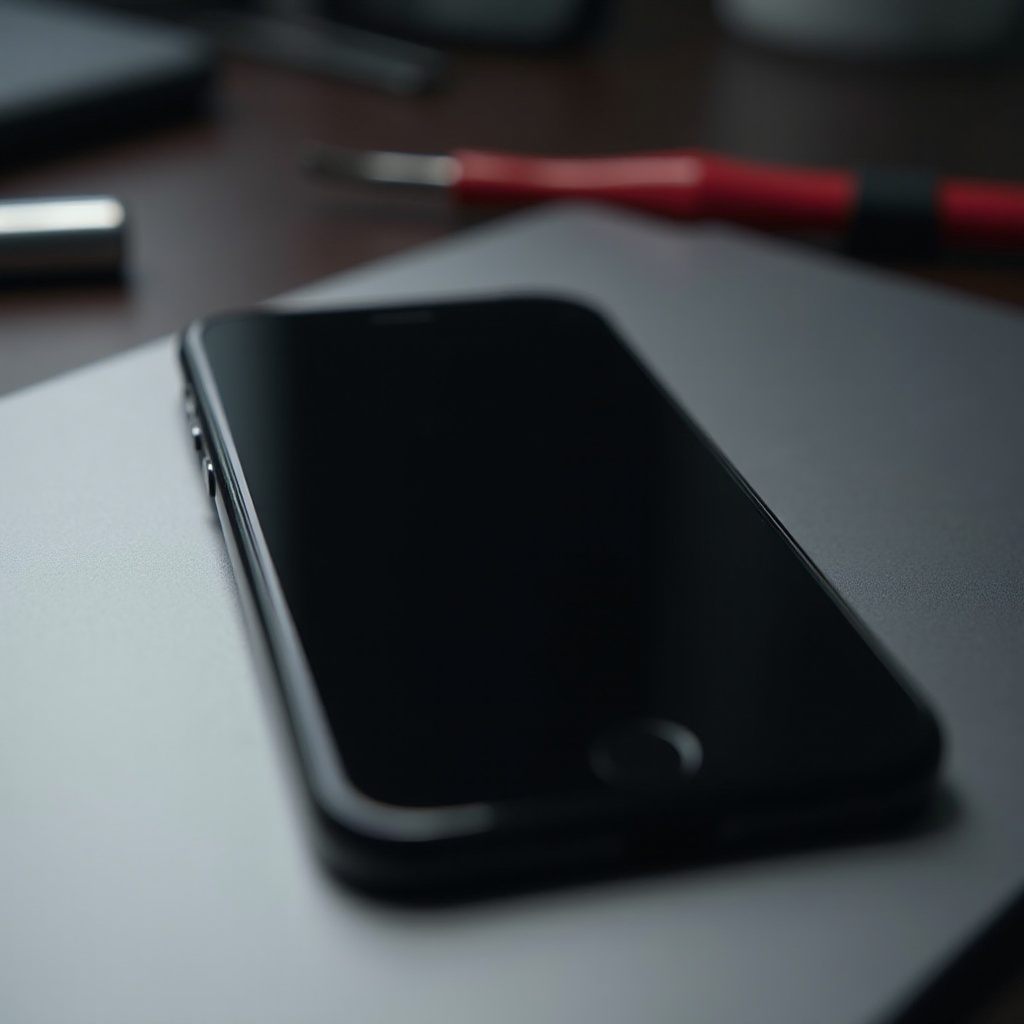Introduction
Dealing with an iPhone X that has a black screen, yet continues to function, can lead to both confusion and frustration. This issue is relatively common among users, and understanding the root causes and potential solutions is crucial. The black screen can stem from a variety of factors, including software glitches or hardware malfunctions. With the correct approach, many users have found success in troubleshooting and resolving this problem. This article will guide you through various strategies, from easy fixes to more comprehensive troubleshooting steps, to help restore your device to its full functionality.

Understanding Why Your iPhone X Screen Went Black
An iPhone X showing a black screen while still operational could be due to multiple factors. Predominantly, it breaks down into software or hardware issues. Software glitches like system crashes or app conflicts might be responsible for the black screen. Additionally, a firmware bug could be contributing, especially in cases where the device isn’t running on the latest software version. On the hardware front, the phone could have suffered a drop leading to internal damage, or there could be a fault with the display connector. Recognizing these causes equips you to tackle the issue with the most appropriate and effective solution.
Quick Solutions to Try First
When confronted with a black screen on your iPhone X, beginning with basic troubleshooting is wise. These simple steps might quickly return your phone to normal.
Perform a Force Restart
A force restart is a straightforward procedure that can resolve temporary software problems or crashes. To carry out a force restart, follow these instructions:
1. Press and swiftly release the volume up button.
2. Press and swiftly release the volume down button.
3. Press and hold the side button until the Apple logo appears.
Charge Your iPhone Correctly
Improper charging methods can sometimes lead to a black screen issue. Make sure to use an Apple-certified charger, and allow your device to charge uninterrupted for at least 30 minutes. If the problem persists, test another charger or try a different power outlet.
Check for Software Updates
Keeping your iPhone updated often resolves bugs that might cause display problems. To check for updates, connect your iPhone to Wi-Fi, head to Settings > General > Software Update, and install available updates.
Advanced Troubleshooting Steps
Should basic fixes fall short, consider these more detailed strategies to tackle the black screen problem.
Restore iPhone Using iTunes or Finder
Restoring your device via iTunes (on PC) or Finder (on Mac with macOS Catalina or later) often resolves intricate software issues:
1. Connect your device to a computer.
2. Launch iTunes or Finder.
3. Select your iPhone once it appears.
4. Opt to restore your device, and follow the on-screen instructions.
Enter DFU (Device Firmware Update) Mode
DFU mode is a deeper restore method that can help recover from severe system issues. To enter DFU mode:
1. Connect your iPhone to a computer.
2. Power off your device.
3. Hold the side button for 3 seconds.
4. While holding the side button, press and hold the volume down button. Maintain hold on both for 10 seconds.
5. Release only the side button, continuing to hold the volume down button for another 5 seconds.
Utilize Third-Party Repair Software
Reputable third-party applications are available to address software-based screen issues without data loss. Prioritize using reliable software known for iPhone repair, and adhere to their guidelines carefully.
When to Seek Professional Repair Services
If none of the above solutions revive your iPhone X screen, it might be time to consult professional repair services. Issues stemming from physical damage or internal component failures require diagnosis and resolution by certified experts. At this junction, visiting an authorized Apple service provider is prudent to ensure high-quality repairs and components. Seeking repairs outside of verified centers may risk further complications.

Preventive Measures to Avoid Future Screen Issues
Proactive habits can significantly reduce the likelihood of encountering black screen issues in the future.
Regular Software Maintenance
Consistently update your iPhone to the latest iOS versions, mitigating risks from potential firmware bugs. Regularly audit and manage apps, especially those infrequently used or known to cause issues.
Battery and Charging Practices
Adopt effective battery management strategies. Avoid completely draining your battery, and always use certified chargers to protect battery health and forestall charging-related complications.

Conclusion
Confronting a black screen on an operational iPhone X can be handled effectively with minimal technical expertise. By following these laid-out solutions—from basic to advanced troubleshooting—users are well-equipped to resolve the issue. Should hardware problems persist, engaging professional repair services is advisable. Through measured preventive steps, maintaining a smoothly operating iPhone X free of unexpected interruptions becomes achievable.
Frequently Asked Questions
Can the black screen issue be resolved without data loss?
Yes, most software-related issues can be resolved without data loss using force restart or third-party repair software.
What are the signs that indicate a hardware problem with the screen?
Signs include physical damage, unresponsiveness after restarts, and visible defects on the display, such as unusual lines or cracks.
Is it safe to use third-party repair services for my iPhone X?
Only use reputable and certified third-party services to ensure quality repair and protection of your device.
